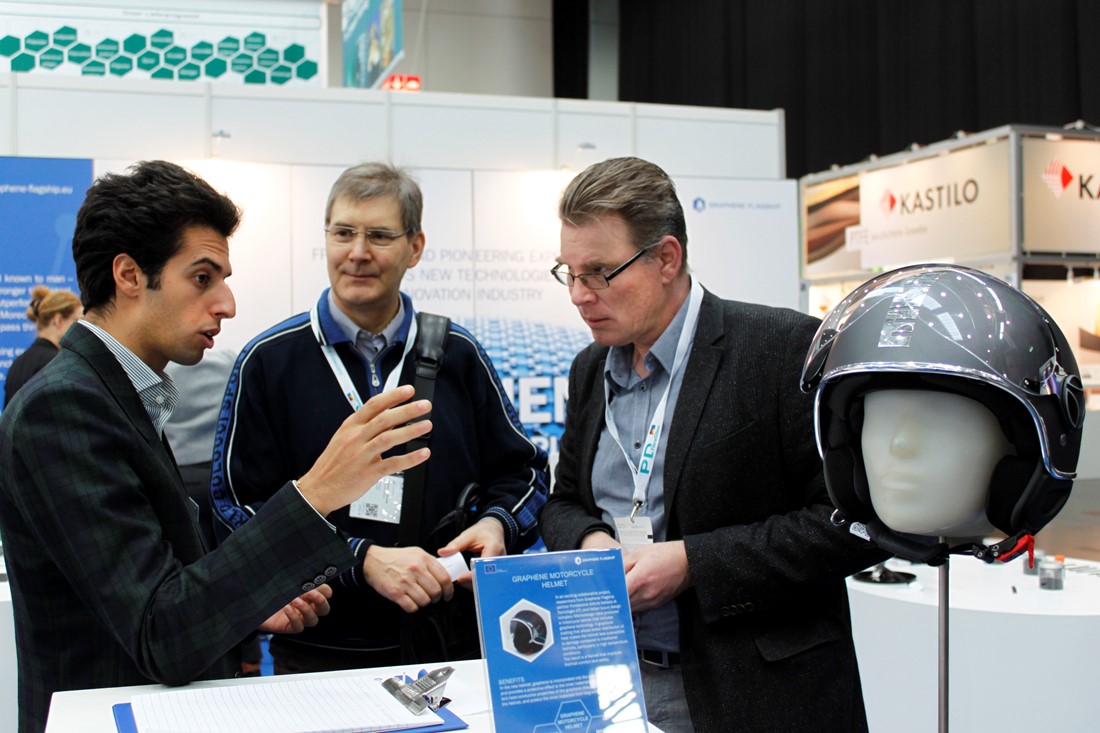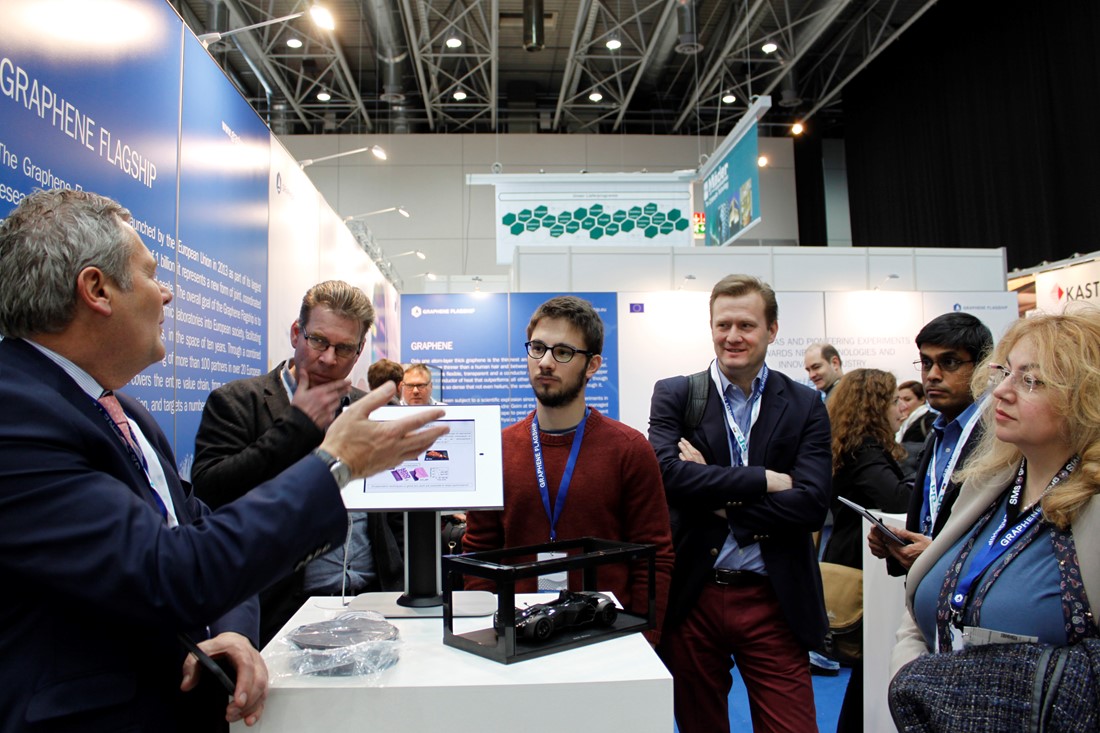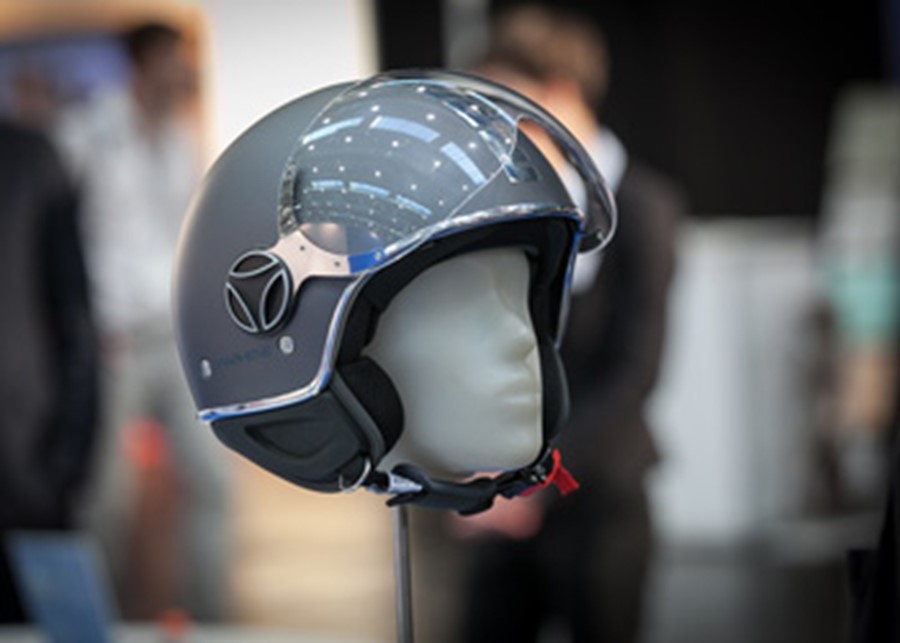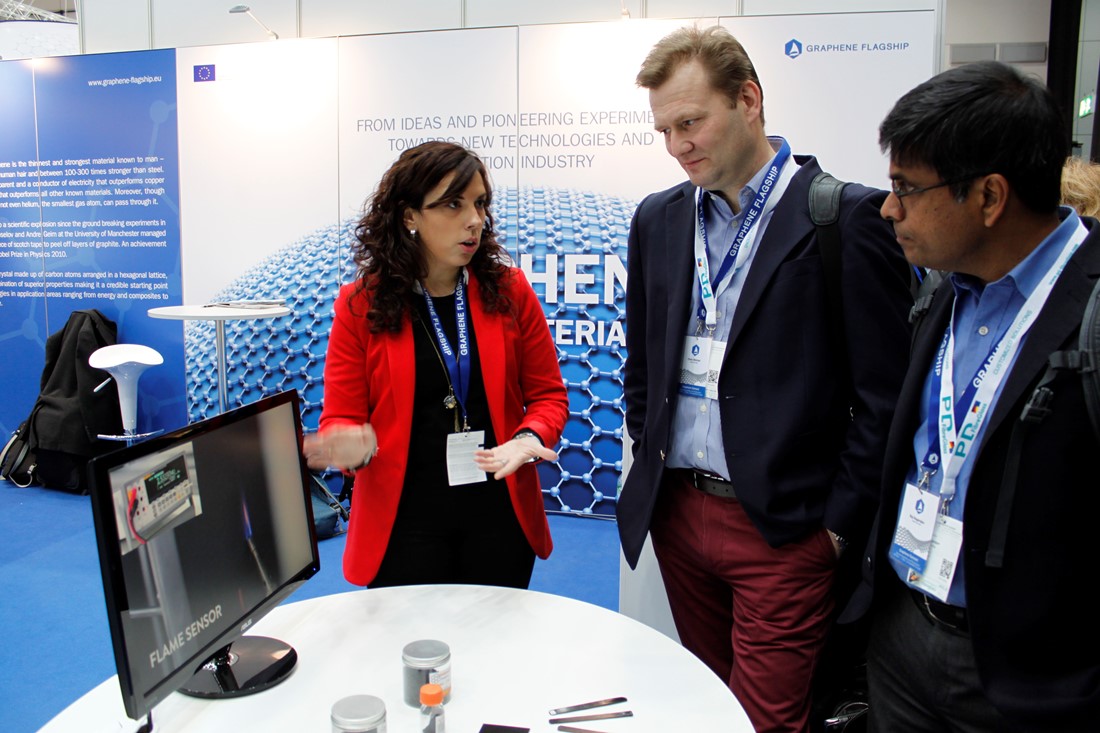Graphene Flagship Engages with Industry at Composites Europe
The Graphene Flagship’s exhibition stand at Composites Europe showcased several different prototypes of graphene technologies. Alongside Graphene Connect, this exhibition was a great opportunity for the Graphene Flagship to promote engagement from industry all along the value chain.
Between 30 November and 1 December, the Graphene Flagship welcomed visitors to its stand at the Composites Europe trade fair, held in Düsseldorf Messe, Düsseldorf, Germany. With over 11 000 trade visitors from across Europe, the fair offered an excellent opportunity the Graphene Flagship to interact with researchers and potential customers across the entire composite value chain.
The Graphene Flagship’s exhibition stand showcased products, prototypes and applications along the value chain, from graphene inks and powders, to conductive resins and flexible printed antennas, all the way up to a commercially available helmet with a heat resistant graphene coating, developed through a collaboration between the Flagship partner Italian Institute of Technology (IIT) and design company MomoDesign. “Visitors have been really interested in our helmet, in how graphene was integrated in the paint used as the coating for the helmet, and the possibility to apply this kind of material and technology in paints for cars, for motorbikes and also in the aerospace industry.” said Luca Gagliani from IIT, who was one of the members of the Graphene Flagship on hand to guide visitors to the Flagship’s exhibition stand. Gagliani pointed out that the benefit of graphene lies its multifunctionality, since with graphene it is “possible to get electrical conductivity, thermal conductivity and high reinforcement of the mechanical properties at the same time.”

Paul Wiper, of the University of Manchester, UK, agrees that the benefit of graphene in composites lies in multifunctional features to the materials. The University of Manchester – a partner institute of the Graphene Flagship – collaborated with composite solutions company Haydale, UK to produce a glider wing with skin made from a pre-impregnated carbon fibre material that includes graphene. “Using the correct type of graphene and processing, we are seeing improvements in interlaminar shear strength, and we’re also seeing effects on the cure time and a potential reduction in water uptake, which would result in weight reduction,” he said.

Of significant interest to the exhibition visitors were the building blocks of these composite materials -- the graphene additives and graphene-incorporated plastics and resins. Flagship partner Interquimica, Spain exhibited multifunctional thermoset and thermoplastic composites “These composites have shown self-sensing properties, changing the value of resistivity when strain or impacts are applied on the surface, being a predictive tool to detect damage in the structures built with these materials, for example, car body parts,” said Elvira Villaro, from Interquimica.
The Graphene Connect workshop, held within Composites Europe, is part of a series of workshops held by the Graphene Flagship to facilitate engagement with external industries. “The Graphene Connect Workshop was very successful in its core task to promote industry engagement related to graphene technologies. It was great to witness companies finding common interests, sharing views and starting discussion about future collaboration during the event,” said Kari Hjelt, from Chalmers Industriteknik, Sweden. Hjelt, the Head of Innovation for the Graphene Flagship, opened the workshop with an introduction to the Graphene Flagship’s aims and ideals, emphasising the Flagship’s focus on true innovation rather than invention. The drive for innovation underpins the necessity of industry engagement within the Flagship, to ensure that the technologies developed within the Flagship are relevant to the industries in which they can be applied.


More than 30 participants from a variety of industries – from raw materials producers to end users – came together to discuss in detail the different needs and potentials for graphene. Gordon Fern, a researcher in the SAFENANO group at the Institute of Occupational Medicine, UK, spoke about the importance of risk management in adopting nanomaterials – a significant consideration in bringing new technologies to market. “The Graphene Connect Workshop was an excellent opportunity to engage with a variety of people and organisations across the graphene value chain and to discuss the real-world problems associated with the commercialisation of this novel material. It also provided an excellent platform to inform people of the support and expertise that SAFENANO can provide,” he said.
Andrea Ferrari, Science and Technology Officer and Chair of the Management Panel of the Graphene Flagship, added "The Graphene Connect series of workshops are designed to facilitate the interactions between graphene researchers and industry. It is great to see that so many products were presented, with the potential for many more. Our next appointment will be at the Mobile World Congress where we will showcase graphene technologies to over 100 000 mostly industrial visitors."



